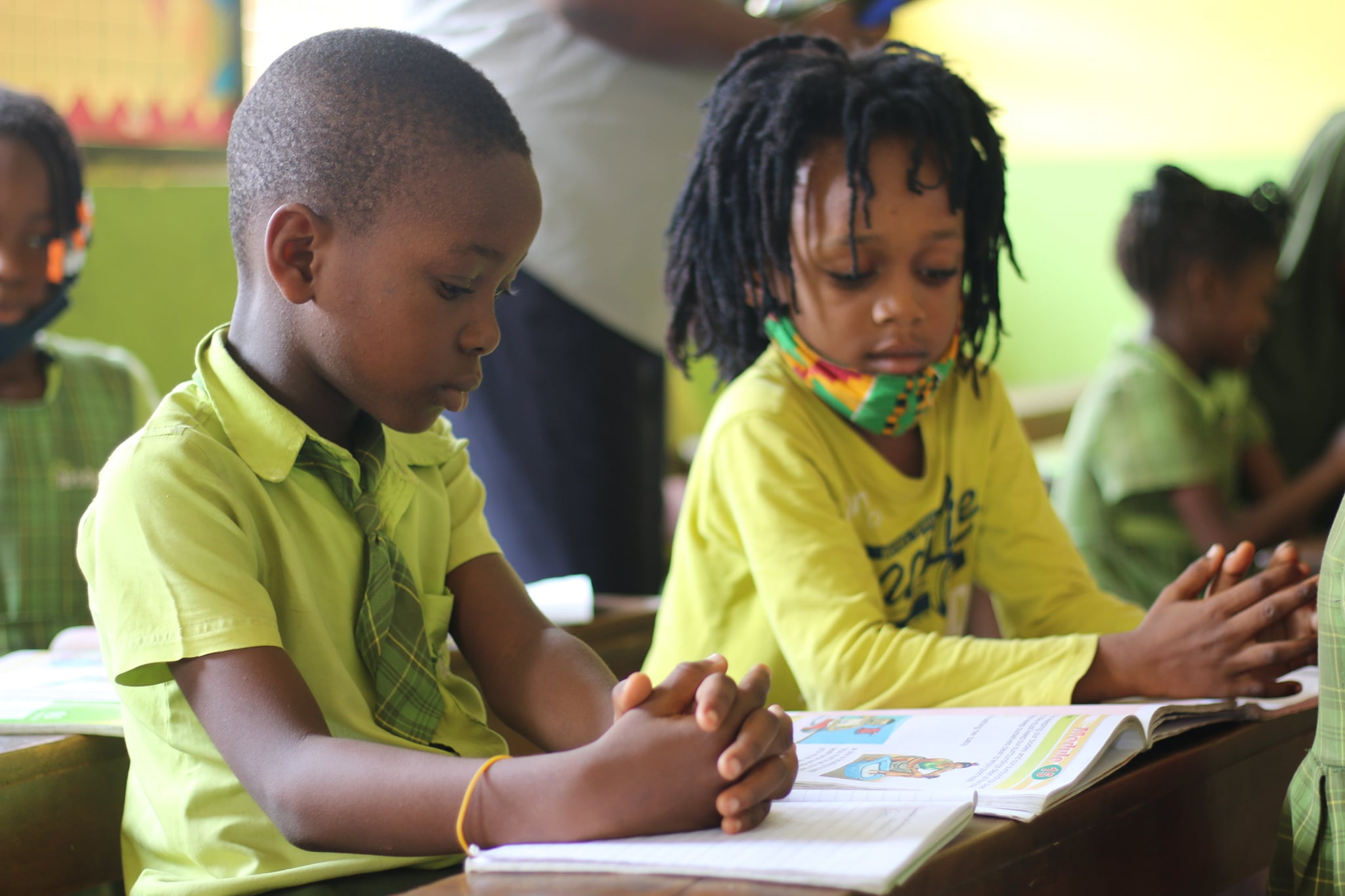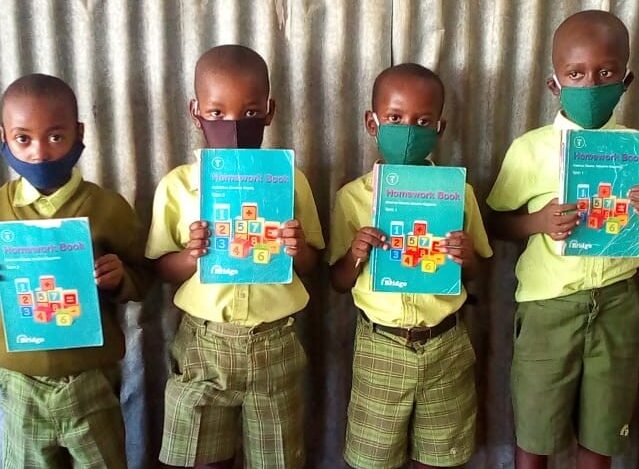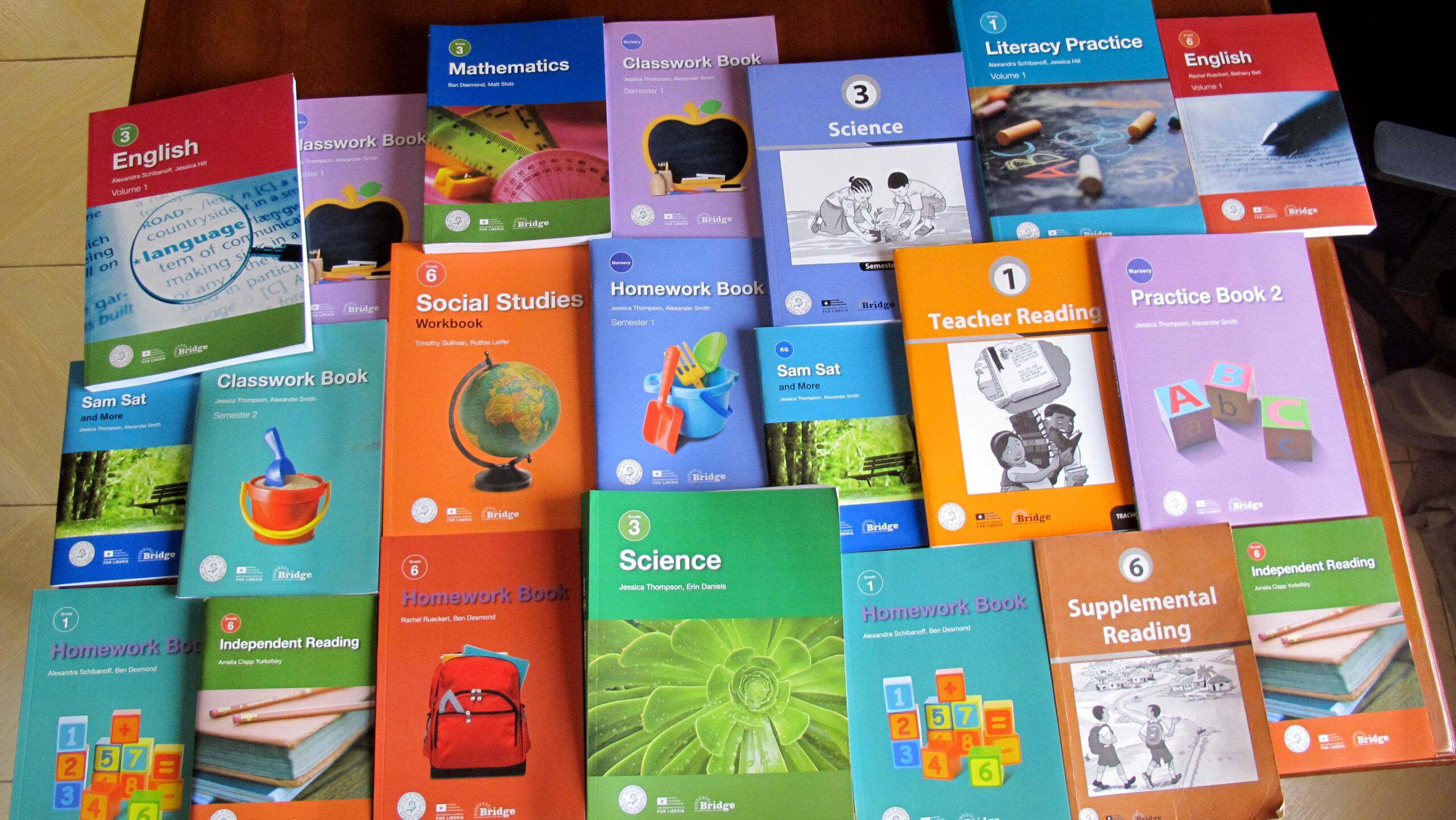A Love of Books Leads to Literacy and Learning
Reading is fundamental to opportunity, prosperity and even better health; it’s an education bedrock. Yet, around the world, most children aren’t able to read well, and many have nothing to read or can’t read at all.
When most people think about books they think about storybooks, full of adventures and new worlds that transport readers. But it’s another kind of book that learning really rests upon – the school textbook.
There are two major factors holding education back: a lack of access to learning and a lack of quality teaching. Walk into almost any classroom in Sub-Saharan Africa and you will see hardly any books available (UNESCO 2016). When it comes to textbooks, it’s not uncommon to have lots of children crowded around a book trying to follow the teacher. This significantly affects learning. Well-designed textbooks in sufficient quantities are only second to engaged and prepared teachers, as the most effective way of improving learning outcomes (GEM: 2016).

A textbook plays a key role in classrooms. They are used by teachers to guide lessons, supplement teaching and support pupils. It’s important that they are age appropriate and designed to support the lesson being delivered. Fundamentally, they also support the conversion of key Ministry and Government education policy aims into practical lesson plans and activities. Yet, despite this fundamental need, many classrooms across Sub-Saharan Africa simply do not have enough, that’s if they have any at all. Their quality and effectiveness can vary for several reasons, including the clarity of instruction, print quality, age and condition of the book. For many, literate or not, the sad reality is that they can have no access to textbooks.
The textbook is in many ways emblematic of the distinction between access to education (“in class”) and access to quality education (“in class, and learning”). If a classroom is devoid of effective textbooks it is likely that very limited learning will be taking place.

The problem of limited availability isn’t always a problem of scarcity. A World Bank Group study called “Where Have All The Textbooks Gone?” (2015) highlighted the impact in Sub-Saharan Africa of poor distribution, poor storage and high levels of stock loss on the availability of textbooks.
So, why are books not more easily available in classrooms worldwide? Cost is an obvious factor affecting availability, and the cost per book can vary dramatically through a combination of cost factors including manufacturing, procurement; publishing; distribution; storage; raw materials; importation and corruption.
One response to these problems has been to break the government monopoly on textbooks. Uganda started to work with a private publisher through a competitive process which saw the cost of textbooks fall by two-thirds whilst increasing quality (Fredriksen, 2012). It is also commonplace at so-called free public schools for parents to be charged for textbooks, disadvantaging those children whose parents can’t afford this hidden expense.
The availability of textbooks and their impact on learning naturally has an impact on a child’s ability to go to the library and get lost in stories about swashbuckling adventure.

The textbook is instrumental and more focus needs to be given to ensuring that a child’s education is not adversely impacted by the absence of effective, well-crafted books in their classrooms. At Bridge, additional textbooks are carefully designed by our team of in-country academic experts, to supplement those provided by national government’s. They follow the host country curriculum; include local characters and situations that pupils can relate to and are always age appropriate. The content in these textbooks is reviewed and updated regularly to match our detailed Teacher Guides. This guarantees that what the teacher says and writes is the same as what appears in the child’s book, for the most effective learning outcome.
Alexandra Fallon, Chief Academic Officer, MoreThanMe said of the books,
“We were so impressed by the quality and accessibility of Bridge textbooks that we made the decision to purchase them for the early childhood grades in all of the PSL schools that we work with. Teachers and students have been equally delighted by these powerful learning resources!”
As we celebrate World Book and Copyright Day, let’s remember that the entry point to a love of reading and a love of books is a good education – and a good education depends on a good well-crafted textbook for each and every child.


